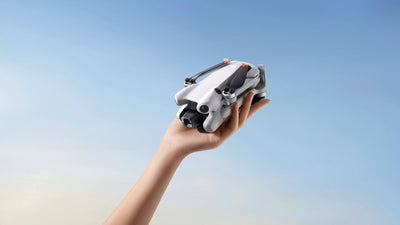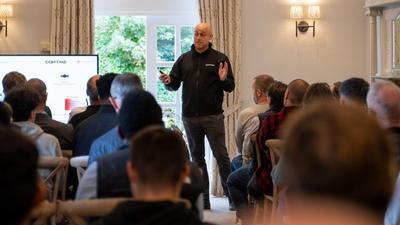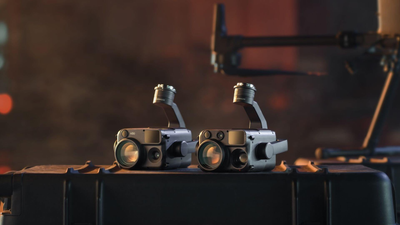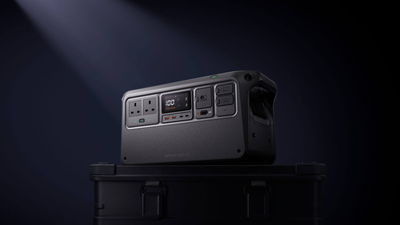Are DJI Drones Waterproof?
- by Stefan Gandhi
When clouds start gathering mid-flight or you're capturing a coastal panorama, a single concern can shift your focus: are DJI drones waterproof? With their reputation for top-tier imaging and intelligent performance, it's a valid question for everyone from weekend flyers to commercial operators.
In this ultimate guide, we break down water resistance across the DJI range, explain what IP ratings really mean, and arm you with safety strategies to keep your drone safe, even when the weather turns.
The Truth About DJI Drone Water Resistance
Let’s be clear: the vast majority of DJI drones are not waterproof. That means they should not be flown in rain, snow or fog, nor should they ever be submerged in water. These devices are engineered for clear skies and dry conditions. However, a few professional-grade models do offer some level of water resistance, allowing for safer operations in unpredictable environments.
Understanding the difference between waterproof and water-resistant is crucial:
- Waterproof: Safe to submerge in water without damage.
- Water-resistant: Can withstand light exposure to moisture, like drizzle or splashes, but not immersion.
No current DJI consumer drone is built to withstand water exposure. Only select enterprise models include limited resistance to environmental hazards.
What Is an IP Rating?
Ingress Protection (IP) ratings measure a device's defence against dust and liquids. The rating features two numbers:
- The first digit = protection against solids (dust, particles)
- The second digit = protection against liquids (water, moisture)
For example:
- IP55: High protection against dust and low-pressure water jets.
- IP45: Lower liquid resistance, safe only for very light splashes.
Most DJI consumer drones do not carry an official IP rating. This lack of certification confirms that they are not built for wet weather.
Which DJI Drones Offer Water Resistance?
Here’s a look at key DJI drones released in the past 14 months and their water-resistance capabilities:
DJI Matrice 350 RTK
- IP Rating: IP55
- Designed for: Enterprise inspections, emergency response, industrial mapping
- Water Resistance: Yes – suitable for light rain and dusty areas
This is one of the few DJI drones currently boasting an official IP rating. It's engineered for rugged, high-stakes use in variable conditions.
DJI Mavic 4 Pro
- IP Rating: None
- Designed for: High-end content creation
- Water Resistance: No
Despite its advanced camera tech, the Mavic 4 Pro should never be exposed to moisture.
DJI Avata 2
- IP Rating: None
- Designed for: FPV enthusiasts, immersive flight
- Water Resistance: None
Built for agility and fun, this drone is strictly a dry-weather flyer.
DJI Air 3S, Mini 4 Pro, Mini 4K
- IP Rating: None
- Designed for: Travel, vlogging, creative hobbyists
- Water Resistance: None
These compact drones excel in good weather but are highly vulnerable in wet environments.
DJI M4 Series (M4E, M4T, M4D, M4TD)
- IP Rating: IP55 (M4D & M4TD only)
- Designed for: Tactical, industrial, and public safety roles
- Water Resistance: M4D and M4TD offer full IP55-rated protection, suitable for light rain and dusty environments
While the full M4 Series is built for durability, only the M4D and M4TD models are confirmed to offer certified environmental sealing.
Can You Fly a DJI Drone in the Rain?
Technically, yes — but you shouldn’t. Flying a non-rated drone in even light rain is a high-risk move. Unless you're using the Matrice 350 RTK, M4D, M4TD or third-party waterproof housings, the chances of permanent damage increase dramatically.
Rain can:
- Cause short circuits in exposed electronics
- Fog or smudge critical camera lenses and obstacle sensors
- Disrupt radio signals and flight control
- Void your warranty
- Lead to long-term corrosion of internal components
What To Do If Your Drone Gets Wet
If your drone is caught in the rain or touches water:
- Land immediately and power off.
- Remove the battery and disconnect all components.
- Dry the exterior with a soft, absorbent cloth.
- Place the drone in a dry container with silica gel packs or uncooked rice for at least 48 hours.
- Do not turn it back on until fully dry.
- Contact DJI Support if damage is suspected.
The faster you respond, the better your chances of avoiding lasting harm.
Tips To Prevent Water Damage
Here’s how to keep your drone protected:
- Check the weather forecast before every flight.
- Use landing pads to avoid splashback from wet ground.
- Carry a waterproof case to shield gear from unexpected showers.
- Keep desiccant packs in your kit bag.
- Avoid pushing the limits of IP ratings — no drone is truly invincible.
For regular use in damp or marine environments, consider investing in specialist waterproof drones or protective modifications.
Conclusion
To recap:
- No DJI consumer drone is waterproof.
- Only the Matrice 350 RTK, M4D and M4TD offer certified water resistance.
- Flying in rain or moisture can damage your drone and void its warranty.
Whether you're a content creator, surveyor, or rescue team operator, knowing your drone’s limits is key to long-term reliability. Choose the right model for your use case, follow weather-aware best practices, and fly with confidence.
Need help choosing the right DJI drone for all-weather use? Explore our full range on the Coptrz official online store here or speak to a Coptrz drone expert today by reaching out to our team at sales@coptrz.com. We'll help you fly smarter, wherever your missions take you.




